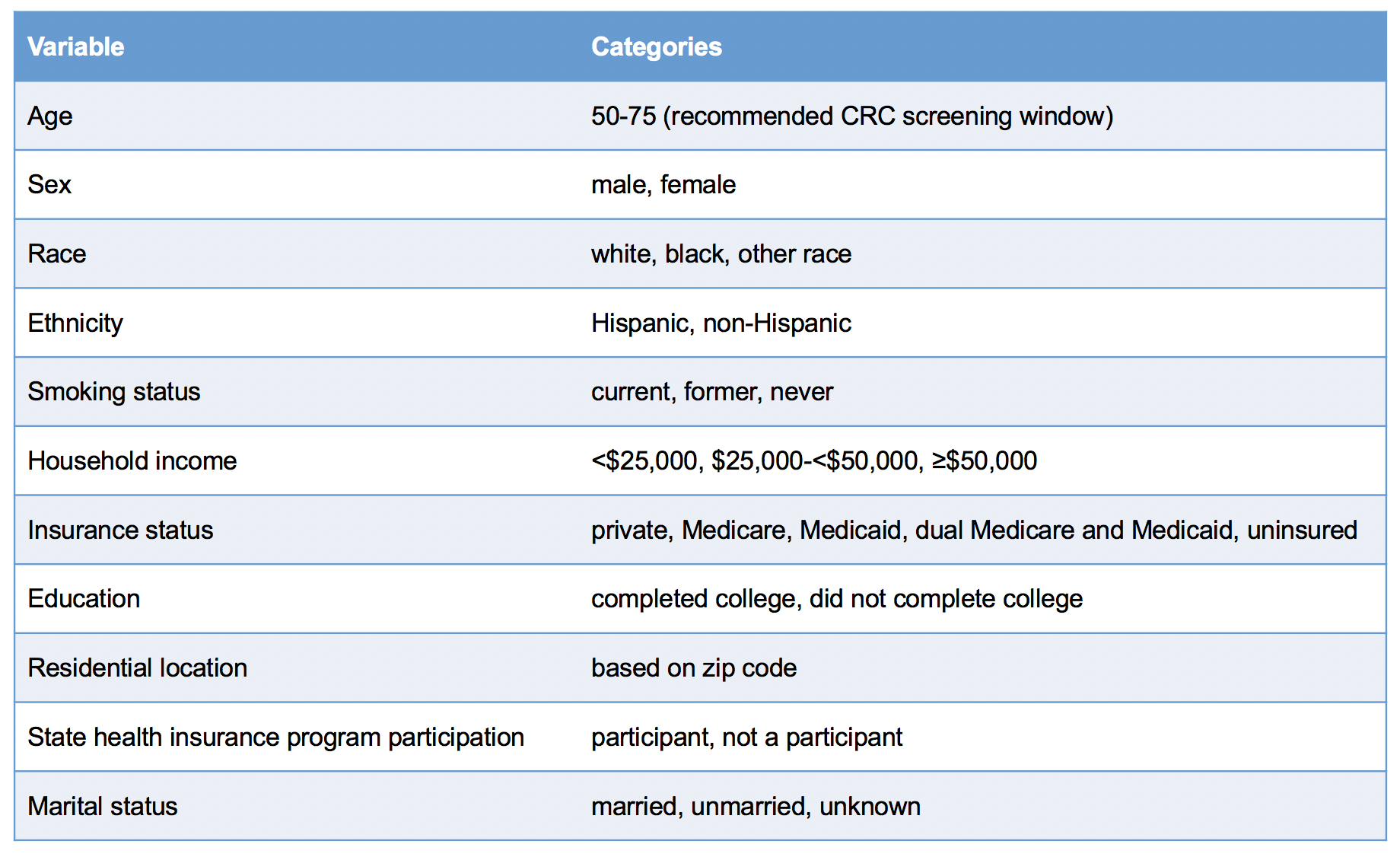Demographics
The model simulates the full life course of every resident of a particular state. Individual-level characteristics affect the simulated events in the natural history and screening components. We used a synthetic population, created with the Topologically Integrated Geographic Encoding and Referencing (TIGER), Summary File 3 (SF3), and American Community Survey Public Use Microdata Sample (PUMS) datasets from the U.S. Census Bureau from 2007-2011 [1-2], assuming it best represents the population in 2009. The “population input” file contains information on the following individual and household-level characteristics.
These demographic data are based on U.S. Census data. To add insurance information we utilized a logistic regression model to probabilistically assign an initial insurance type based on the demographic information in the U.S. Census data. The “Medicare” insurance category can include those with Medicare and another source of coverage other than Medicaid. Similarly, the “Medicaid” category can include those with Medicaid and another source of coverage other than Medicare.
Dynamic vs. Static Demographic Characteristics
Simulated individuals’ ages increase by one year every year they are alive. Insurance status, which is one predictor of routine compliance with screening, can change over the course of a person’s lifetime, especially due to federal and state policy changes (e.g. Affordable Care Act, etc.).
An individual’s insurance status at ages 50 and 65 depends on the person’s age, insurance status, and income in 2009. The percentage of individuals with each insurance type at ages 50 and 65 is 100% unless otherwise specified. An individual is probabilistically assigned to an insurance status at ages 50 and 65 according to the percentages indicated. These percentages were calibrated so that our synthetic population’s insurance information reflects the actual population’s insurance information before and after age 65. The user can modify the probabilities.
In contrast to the aforementioned dynamic characteristics, this model assumes that an individual’s sex, race, smoking status, household income, education, and residential location are constant from age 50 for his or her simulated life cycle.
Sources:
- Wheaton WD, Cajka JC, Chasteen BM, et al. Synthesized population databases: a US geospatial database for agent-based models. Methods Rep RTI Press. 2009;10:905. DOI: 10.3768/rtipress.2009.mr.0010.0905
- RTI International. RTI U.S. synthetic household population. Available at: https://www.rti.org/impact/rti-us-synthetic-household-population™. Last accessed July 14, 2019.
